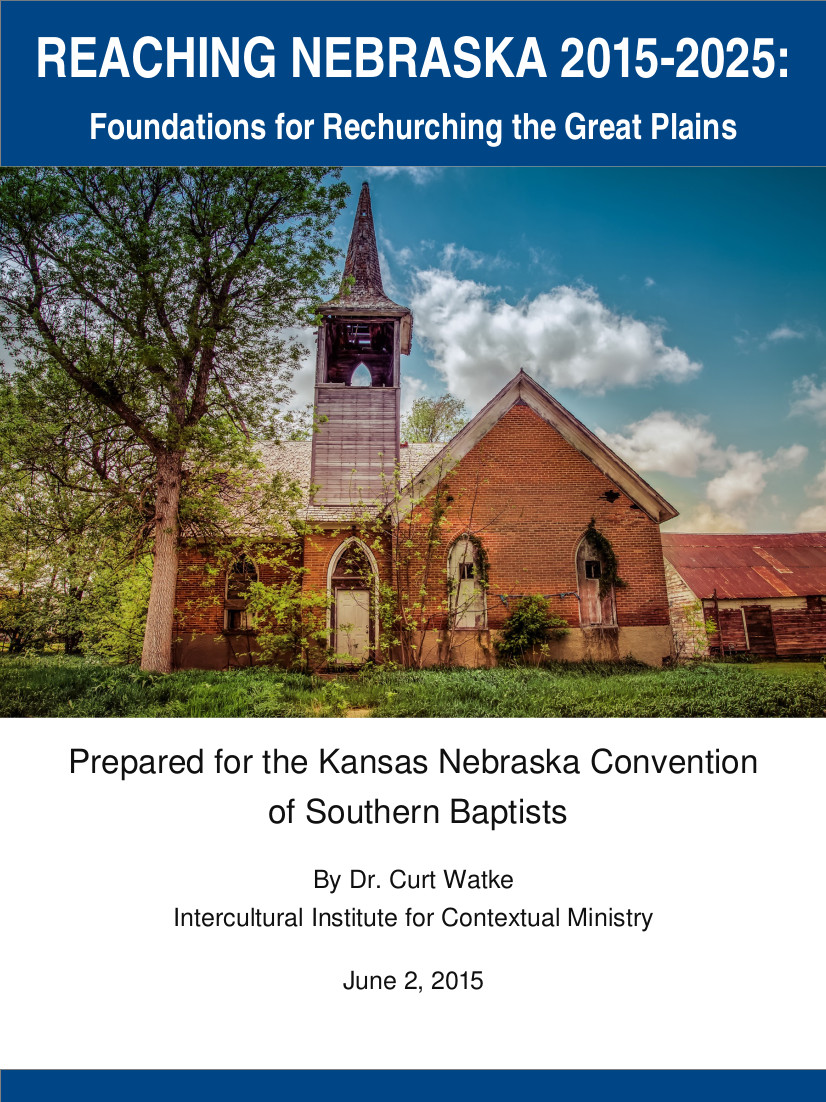Church Planter Catalyst Feasibility Study
for the Kansas-Nebraska Convention of Southern Baptists
The state of Nebraska has a very large land area with pockets of population concentration but also has significant portions of the state with low population density. Because Church Planter Catalysts have a responsibility of catalyzing four new church plants each year, they need to be positioned geographically so as to maximize their potential. Since a new position has been created, the question of where to place the new catalyst that will complement the other CPCs is crucially important. Since there is a need for a Hispanic CPC in the future, planning for that person needs to be considered as well.
Process
This proposal recognized that several different types of information should be used to provide a cluster of variables that will speak to the overall situation. The report that was created included maps, tables, and text that explain various dimensions of community data at the county and/or place geographies. The data for the project included the following (other data was added as the project is developed, also see separate section for Hispanic analysis below):
Population data
- Estimated population change from 2010 to 2014
- Projected population change from 2013 to 2025
- Population density per square mile
- et international migration from 2010 to 2014 for CBSAs and/or CSAs and possibly counties
- Net domestic migration from 2010 to 2014 for CBSAs and/or CSAs and possibly counties
- Total net migration from 2010 to 2014 for CBSAs and/or CSAs and possibly counties
Geographic data
- Various configurations of regional areas based on internal KNCSB data, FCC and census designations including metropolitan and micropolitan areas, and core based statistical areas.
- Location of urbanized areas across the state along with population density
- Percent urban and rural for each county along with their respective rural-urban continuum, urban influence, economic dependence, and persistent poverty codes.
- Geographic mobility patterns by county and across regional areas
Economic patterns
- Unemployment rate along with types of employment and median household income
- An overview of three types of poverty and two types of working poor across geographies with a per capita and household income analysis
- An analysis of rural to urban commuting patterns to establish commerce flows
- Percentages of people in occupational categories across various configurations of regional areas
- Average weekly wages by county and averaged across various configurations of regional areas
- Aggregate household income in metropolitan and micropolitan areas, and core based statistical areas
- Aggregate household income by age of householder, by types of income including retirement, public assistance, etc.
- Shares of aggregate household income by quintile ranges
Religious evaluation
- Analysis of mission site locations relative to various configurations of regional areas
- Analysis of extent of adherents and attendance in evangelical, mainline protestant and catholic churches along with estimated SBC presence within geographical areas
Hispanic Analysis
An analysis of the Hispanic population across the state of Nebraska will be completed that uses various demographic, economic, immigration and business pattern data to determine the best positioning of a future CPC. Data included:
Population data
- Population totals and trends
- Age groups and median age
- Countries of origin
- Nativity, citizenship status and year of entry
- Language use and extent of English ability
- Family type and marital status
- School enrollment and educational attainment
- Income levels and poverty status
Geographic data
- Geographic mobility patterns by county and across regional areas
- Population density by county and across regional areas
Economic patterns
- Types of employment, occupations and median household income
- Poverty status of Hispanic populations
- Per capita and aggregate income patterns
- Means of transportation to work

